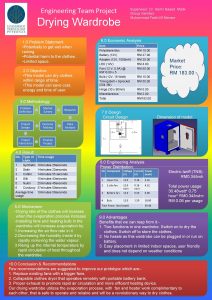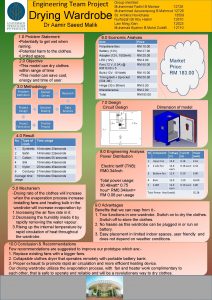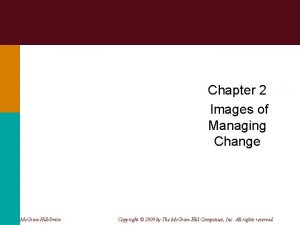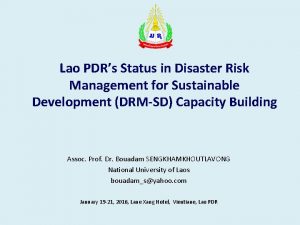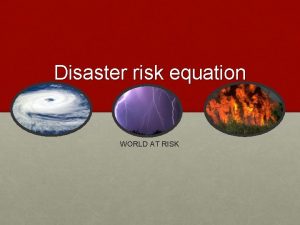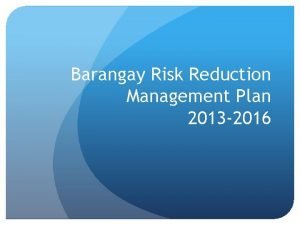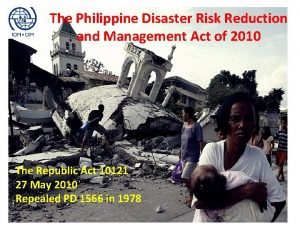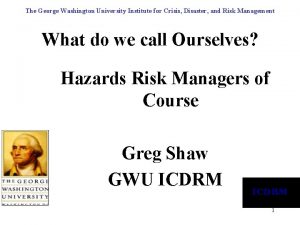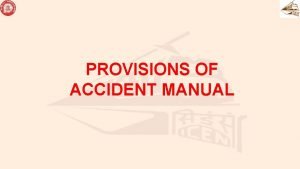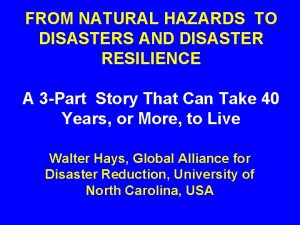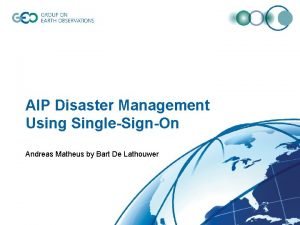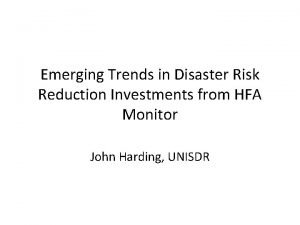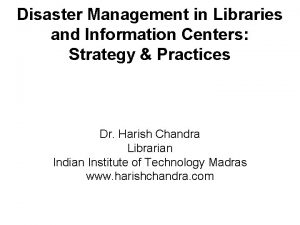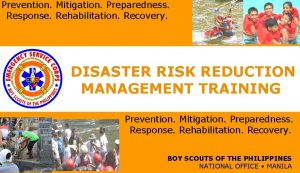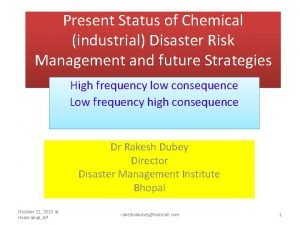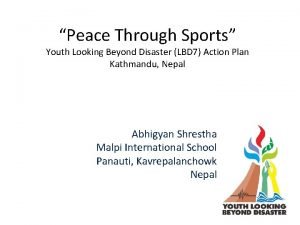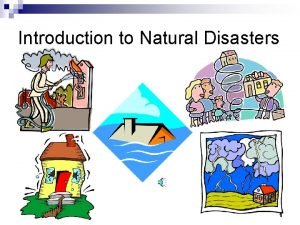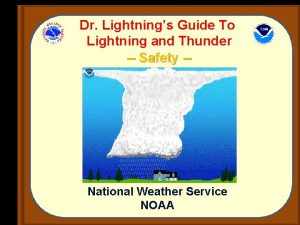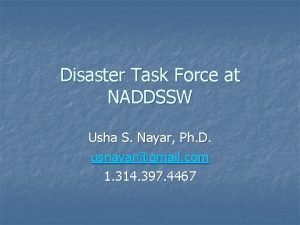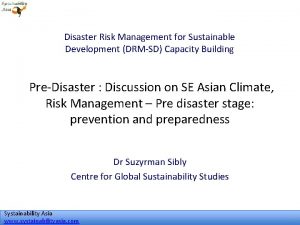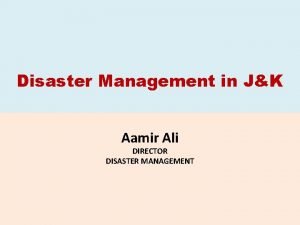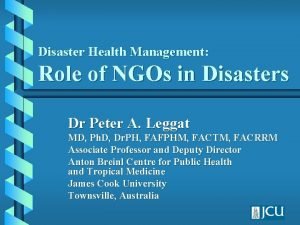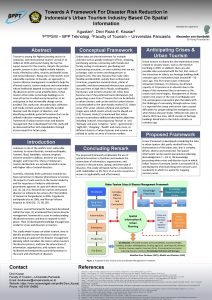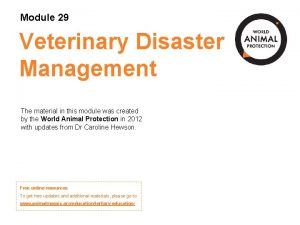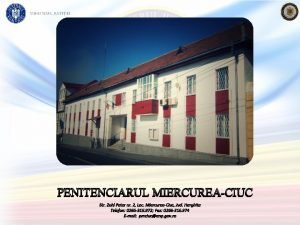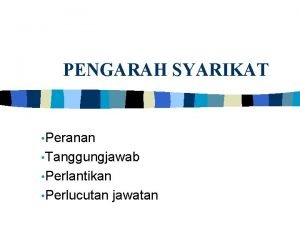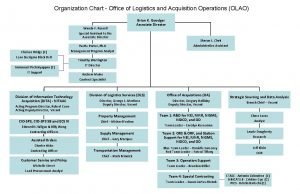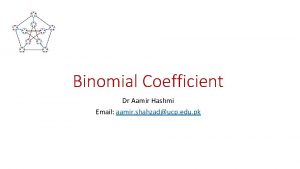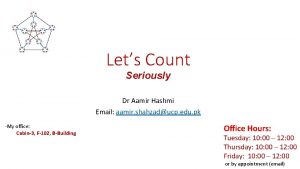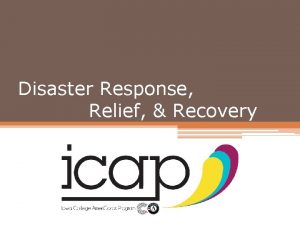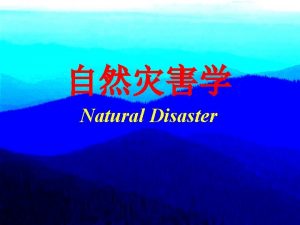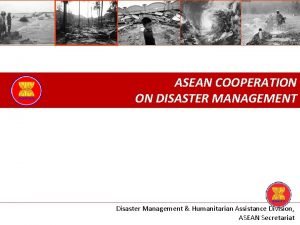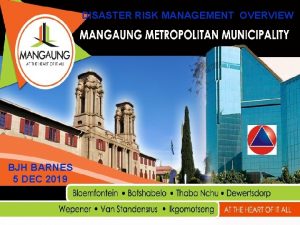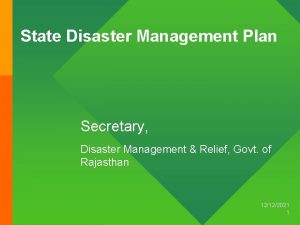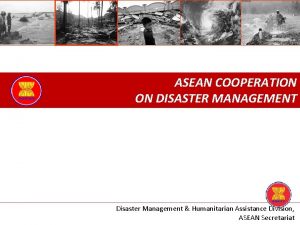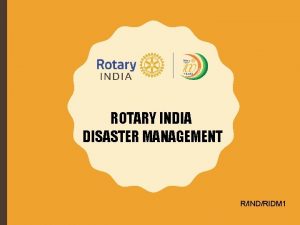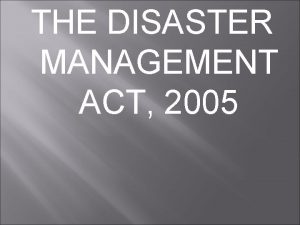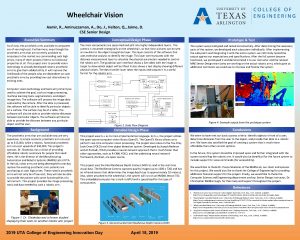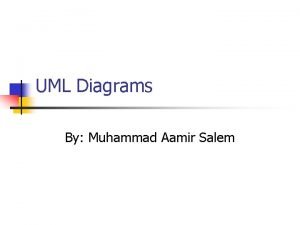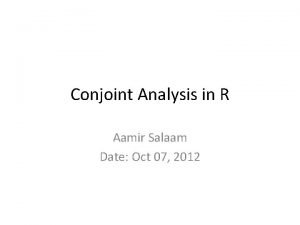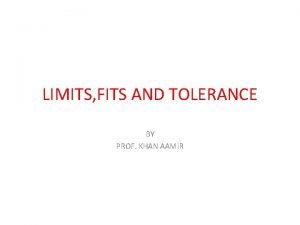Disaster Management in JK Aamir Ali DIRECTOR DISASTER






































- Slides: 38

Disaster Management in J&K Aamir Ali DIRECTOR DISASTER MANAGEMENT

Jammu & Kashmir is a Multi Hazard Prone State: q q q Earthquakes Floods & Cloud bursts Wind Storms Snow blizzard Fire, Forest Fires Drought Landslides Avalanches IED/Grenade blasts Cross firing/Border firing Accidents • • J&K lies on a faulted strata Seismic-Zone IV and V Buildings and lifelines have low earthquake resistance Floods are a persistent threat Incidents: • • Earthquake 8 th October 2005 Floods of September 2014 Cloud bursts, as in Leh Snow blizzard, Waltengu Nad Landslides & Avalanches in Hilly areas & National Highways Fires and Forest Fires Road accidents-recurring losses. 2

Hazard Profile of the State S. No Hazard Areas Covered 1 Earthquakes Srinagar, Ganderbal, Baramulla Kupwara, Bandipora, Budgam, Anantnag, Pulwama, Doda, Ramban, Kishtwar under Seismic Zone V Rest of the State, including whole of Ladakh region and Jammu Division in Seismic Zone IV. 2 Floods 3 Avalanches & Higher reaches of Kashmir including Anantnag, Kulgam, Gurez, Kargil, Drass, Leh, Sonamarg, Gulmarg, Tangdhar, Machil, Keran, Doda, Snow Ramban, Kishtwar, Banihal etc. vulnerable to Avalanches. Low-lying areas of Kashmir Valley and parts of Jammu prone to Floods. Blizzards 4 Landslides Areas along major highways, particularly Ramban, Panthial, Banihal, Doda, Kishtwar, Rajouri etc. are landslide prone. 5 Drought Most parts of Jammu division including Doda, Udhampur, Kathua, Jammu etc. are Drought-prone.

State Profile (Contd…) 6 Wind storms Ladakh is prone to high speed winds, but due to sparse population and traditional construction practices there are less damages. In rest of the State wind storms result in destruction of crops, horticulture, as well as properties. 7 Fires District Headquarters/densely populated towns, are prone to fire incidents, particularly Gurez, Doda, Kishtwar and other inaccessible areas. 8 Road Hilly roads especially in Doda, Ramban, Udhampur, Rajouri, Reasi, Poonch, Kishtwar, Ramban, Baramulla, Anantnag, Pulwama, Budgam, Jammu, Kathua, Zojila, Kargil, Leh etc. are prone to road accidents. Accidents 9 Others Several parts of the State face hazards like Thunderstorms, Cloud Bursts, Lightening, Hailstorms, Forest-fires, Glacial Lake Outburst Flow (GLOF), Heavy Snowfall, Epidemics, Heat-wave, Cold-wave, etc. 10 Man-made The State is also vulnerable to human-induced disasters

1819 Kutch (Magnitude 8. 0) 1833 Bihar 8. 7 1897 Assam 8. 7 1905 Kangra HP 1934 Bihar – Nepal 8. 3 1950 Assam 8. 6 1967 Koyna 6. 5 1993 Lattur-Killari 6. 3 1997 Jabalpur 6. 0 2001 Bhuj 7. 2 2005 Muzafarabad 7. 6 Earthquake vulnerability 5

Seismic Map of India Source: IS 1893 (Part 1) : 2002 (BIS) Zone Magnitude Zone V Very High Risk Quakes of Magnitude 8 and greater Zone IV High Risk Quakes upto Magnitude 7. 9 Zone III Moderate Risk Quakes upto Magnitude 6. 9 Zone II Seismic Disturbances upto Magnitude 4. 9 6

Seismic vulnerability

Comparative energy released in Earthquakes of different magnitudes Magnitude 9. 0 4. Light 5. Moderate 7. 6 Kashmir, 8 th Oct 2005 8. 8 Chile, 2010 9. 1 Japan, 2011 Each unit of magnitude releases about 10 times more energy Its a base 10 logarithmic scale. Magnitude 5 is 10 times stronger than Magnitude 4 and 100 times stronger than Magnitude 3


10

11

Heavy rainfall is one of the challenges that J&K faces due to its steep topography Frequency of Cloudburst from year 1860 to year 2013 • Impact of climate change will be more prominent in future. • Rainfall intensity/frequency and duration may also increase and extreme events are likely to increase.

Floods of September 2014 13

National Disaster Management Authority (NDMA) Headed by Hon’ble Prime Minister of India DISASTER MANAGEMENT ACT, 2005 No: 53 of 2005 dated 23 rd December 2005 14

Disaster Management Deptt • A separate Department of Disaster Management, Relief, Rehabilitation and Reconstruction established vide Government Order No. 1444 -GAD of 2016 dated 30. 12. 2016: - – to safeguard life and property – minimise damages – reduce vulnerability – build capacities for efficient disaster response mechanism. B-1

J&K State Disaster Management Authority Hon’ble • Governor Chairperson • Advisor (V) Vice Chairperson • Advisors (K), (G) Members • Chief Secretary Member • Administrative Secy. (DMRRR) Member/CEO • Dy. CEO Member Secretary 16

State Executive Committee Chief Secretary Administrative Secretary (DMRRR) Financial Commissioner (Revenue) Director General of Police Administrative Secretary Home Administrative Secretary PDD Administrative Secretary Finance Administrative Secretary PW(R&B) Administrative Secretary PHE/I&FC Administrative Secretary H&ME Administrative Secretary Revenue Administrative Secretary Rural Dev. Administrative Secretary Housing & Urban Dev. Addl. Director General CD, HG, SDRF Divisional Commissioners Principal Chief Conservator of Forests Director Fire & Emergency Services Deputy CEO SDMA Chairperson Member/CEO Member Member Member Members Member Secretary

Divisional Disaster Management Authority SRO 225 dated 29. 5. 2017 • • • • • Divisional Commissioner Chairperson Inspector General of Police Member Deputy Commissioners Member Additional Commissioner Member/CEO DIG CD, HG, SDRF/Commandant SDRF Member Dy. CEO SDMA Member Secy. Principal, Govt. Medical College/Director SKIMS Member Chief Engineers R&B, MED, EM&RE, I&FC, PHE Members Commissioner Municipal Corporation Member Chief Conservator Forests/Chief Wildlife Warden Member Director CAPD Member Director Health Services Member Director Rural Development Member Director Urban Local Bodies Member Joint Director Fire & Emergency Services Member SSP Police Control Room Member Director Meteorological Deptt Member Rep of Air Force, Army, Paramilitary, BRO etc. Special Invitees (Divisional Commissioner may co-opt any officer, as may be deemed necessary) 18

District Disaster Management Authority Deputy Commissioner Chairperson Addl. Dy. Commissioner District Superintendent of Police Chief Medical Officer Superintending Engineers R&B, PHE, IFC, EM&RE, MED Asst. Director CAPD Deputy Controller, Civil Defence Asst. Director Fire & Emergency Services District Disaster Management Officer Executive Officer Municipal Committee I/c SDRF Component Member/CEO Members Member Member 19

Plans and Policies J&K State Disaster Management Plan J&K State Disaster Management Policy District Disaster Management Plans DM Plans for special events like Shri Amarnath Yatra, Urs etc. • Flood Mitigation & Management Plan • DM Plans of Health Institutions. • JKSDMA website. www. jksdma. org • • 20

School Safety Programme • National Guidelines on School Safety. • Regular training and capacity building programmes, in a phased manner. • Mock drills thru’ Red Cross, Civil Defence, Home Guards, SDRF, Health Dept. • State Plan and DM Plans of all Educational Institutions. 21

Sustainable Reduction of Disaster Risk Poonch and Anantnag Districts • Workshops for designing District wise Community based Disaster Management Strategy • Updation of State and District DM Plans from community lens. • Preparation of audio, video spots for up-scaling the model to other Districts. • State level Training of Trainers (To. T) on CBDM. • Conduct of Mock drills at State and District level. • Part support for augmentation of resources-equipments for DEOC. • Awareness campaigns. • Training of stakeholders for DRR/Recovery Plan • Preparation of Comprehensive DRR/District Recovery plan • Training of NGOs and Community Based Organisations on DRR. 22

Mock exercises: • Funds @Rs 1. 00 lakhs, released to all 22 Districts for conduct of mock exercises at District Level, involving all stakeholders (2017 -18) • Incident Response System (IRS) Training conducted at State level in Srinagar and Jammu. • Mock exercises for testing preparedness for Shri Amarnathji Yatra conducted at Baltal and Nunwan. • Mock exercises conducted for Shri Mata Vaishnu Devi Shrine Board. All staff members imparted training in First Aid, Fire Fighting, Search and Rescue. 23

HADR exercises • Humanitarian Aid in Disaster Response (HADR) exercises with IAF at Jammu and Srinagar. 24


Flood Management Plans • • • Orders issued for effective flood management. Pooling of resources under Div Com and DCs Flood Control Room established at R. M. Bagh and Jammu. Automatic Water Level Recorders established at Sangam, RM Bagh, Khudwani, Batkoot, Wachi. Sufficient stocks of empty cement bags available with I&FC. Procurement of boats and inflatable rafts, initiated. Global Navigation Satellite System procured by I&FC. Advisories and flood related information disseminated through electronic and social media. Encroachments removed from Spill channel and Tributaries. Dredging of River Jhelum and flood spill channel. Dewatering Stations upgraded and pumps procured.

Emergency Operation Centres (EOC)/Control Rooms • State EOC Srinagar established at Humhama (near Airport). • DEOCs/Control rooms established in DC Offices. • Land being identified for DEOCs. • 50 kanals of land identified for State EOC (Jammu) at Sidhra, near J&K IMPA building.

IEC, Mock drills and daily drills 28

29

Technology Strategy at State level • River Morphology Study initiated with support of World Bank for River Jhelum and River Tawi • Hazard Risk and Vulnerability Assessment (HRVA) of State, with special focus on Urban Seismic Vulnerability initiated, with support of World Bank. • Building bye-laws amended to ensure all structures are made disaster-resistant. • Seismic micro-zonation of Srinagar initiated through Kashmir University. • Comprehensive earthquake risk mitigation plan being rolled out for 8 most vulnerable states including J&K. • Retrofitting of Critical infrastructure being taken up. 30

Disaster Mitigation Fund A token amount of Rs. 25 Crore approved for Disaster Mitigation Fund; – Rs. 22 Crore (@ Rs 1 Crore per district) for District Disaster Mitigation Fund: • 50% for critical rescue equipments, 20% for Capacity building, 20% for innovative projects for community based DM Projects, 10% for IEC activities – Rs 2 Crore (@Rs 1 Crore for each Divisional Commissioner) for mitigation activities. – Rs. 1 Crore to meet any other mitigation requirements at State level. • Budgetary allocation of Rs 10. 00 Crore for current year. – Guidelines prepared.

Rescue and Relief measures J&K State Disaster Response Force (SDRF): • Two Battalions of J&K SDRF headquartered in Srinagar and Jammu. • SDRF Teams deployed in Districts under command of DCs. J&K Fire & Emergency Service (F&ES): • 2065 F&ES personnel deployed in 176 Fire Stations, (including 21 Fire Posts and River Stations) across the State. Volunteers trained: • 300 volunteers trained per District (Total 6600) in disaster preparedness, under Community Based Disaster Preparedness. • 200 additional volunteers being trained in District Srinagar under Aapda Mitr Scheme. 78 already trained. Rescue kits being procured for 200 volunteers. Funds: • Rs 5. 5 Crore released to each DC & Rs 7. 50 Crore to each Div Com under SDRF. • Rs 10 Crore budget announcement for J&K State Disaster Mitigation Fund. Rescue equipments: • Funds approved for J&K SDRF (Rs. 12 Crore) and F&ES (Rs. 15 Crore) for procurement of life saving equipments. • 30 boats procured by J&K SDRF under JTFRP-World Bank Project, last year. • Advanced rescue equipment being procured under JTFRP-World Bank Project for J&K SDRF (Rs 30 Crore) and for J&K F&ES (Rs 15 Crore).

Natural Calamities covered and proposed (under State Disaster Response Fund) Calamities covered under SDRF: • Cyclone, Drought, Earthquake, Fire, Flood, Tsunami, Hailstorm, Landslide, Avalanche, Cloudburst, Pest Attack and Frost & Cold Wave. Calamities under State Specific Disasters: • Lightening, Windstorms, Drowning.

SDRF Relief Norms 1. Gratuitous Relief: a) Death: Rs. 4 lakh including those involved in relief operations. b) Disability: Rs. 59, 100/- for disability between 40% and 60% Rs. 2. 00 lakh for disability >60% c) Injuries: Rs. 12, 700/- for hospitalization >a week. Rs. 4, 300/- hospitalization <a week. d) Clothing/utensils/HH goods (houses washed away/fully damaged/severely inundated for more than two days), Rs. 1, 800/- for loss of clothing, Rs. 2, 000/- for utensils/HH goods e) Milch animals, Rs. 30, 000/- Buffalo/Cow/Camel/ Yak etc. , Rs. 3, 000/- Sheep/Goat/Pig. , f) Draught animals, Rs. 25, 000/- Camel/ Horse/ Bullock etc Rs. 16, 000/- Calf/ Donkey/Pony/ Mule. (Max 3 large milch or 30 small milch animals or 3 large draught or 6 small draught animals) g) Poultry @ Rs. 50/- per bird (Max ceiling of Rs. 5, 000/- per HH).

SDRF Relief Norms 2. HOUSING: a) Fully damaged/destroyed houses/severely damaged Pucca house/ Kutcha House Rs. 95, 100/- in plain areas, Rs 1, 01, 900 in Hilly areas. b) Partially damaged houses: Pucca (damage>15%) Rs 5, 200/house, Kutcha house (>15%) Rs 3, 200/house. a) Damaged/destroyed huts Rs 4, 100/hut (inferior to Kutcha house) b) Cattle sheds attached with house: Rs 2, 100 per shed. 3. INFRASTRUCTURE: Repair/restoration (of immediate nature) of damaged infrastructure. (i) Roads & Bridges, (ii) Drinking water (iii) Irrigation (iv) Power (immediate restoration) (v) Schools (vi) PHCs (vii) Community assets owned by Panchayat. 4. RESCUE EQUIPMENTS: 10% allocation can be utilised for procurement of essential search and rescue equipments, including communication equipments. 5. CAPACITY BUILDING: 5% allocation can be utilised for capacity building.

World Bank Funded Flood Recovery Project Components Cost (USD Million) ØReconstruction and strengthening of Critical Infrastructure 60. 00 ØReconstruction of Roads & Bridges 80. 00 ØReconstruction of Urban Flood Management Infrastructure 50. 00 ØReconstruction and strengthening of Livelihoods 15. 00 ØStrengthening Disaster Risk Management Capacity 25. 00 ØImplementation Support 20. 00 TOTAL US Dollars 250. 00

Disaster Management under World Bank Aided Project Ø Capacity Building of SDMA & Disaster Response Network (Rs. 30 Crores) Ø Study of River Morphology of the Jhelum & Tawi (Rs. 19 Crores Each)- Firms alloted for both the rivers. Ø Multi-Hazard Risk & Vulnerabilty Assessment, (Rs. 15 Crores): RMSI alloted consultancy. Ø Upgradation of Design guidelines and Building Codes & Material Specifications, (Rs. 1. 00 Crore). Evaluation of the EOI’s completed and shortlist submitted to World Bank for approval. Ø Setting up of Decision Support System (DSS) and Emergency Operation Centres (EOC) - (Rs. 30 Crores) Makeshift EOC at Humhama to be equipped with necessary equipment. Some barracks, store rooms and an Office Room to be constructed. Ø Procurement of Critical equipments for SDRF & Fire & Emergency Services - list of equipments finalised and tendered. SDRF (Rs. 27 Crores) and F&ES ( Rs. 15 Crores). 10 number Fiber Boats & 20 No. Inflatable Boats procured under Emergency. Ø 28 additional boats tendered along with other rescue equipments

Thank you 38
 Dr aamir cheema
Dr aamir cheema Dr aamir saeed
Dr aamir saeed Change management pictures
Change management pictures Disaster management conclusion
Disaster management conclusion Early warning system in disaster management
Early warning system in disaster management Complete the equation: (+hazard) / capacity=disaster *
Complete the equation: (+hazard) / capacity=disaster * Records management disaster recovery plan
Records management disaster recovery plan What is the role of government in disaster management
What is the role of government in disaster management Uwl mitigation
Uwl mitigation Civil defence disaster management
Civil defence disaster management Barangay disaster risk reduction management plan
Barangay disaster risk reduction management plan Conclusion of disaster management
Conclusion of disaster management Philippine disaster reduction and management act
Philippine disaster reduction and management act Institute for crisis disaster and risk management
Institute for crisis disaster and risk management Disaster management
Disaster management 4 pillars of disaster management
4 pillars of disaster management Disaster management conclusion
Disaster management conclusion Emerging trends in disaster mitigation
Emerging trends in disaster mitigation Disaster management in libraries and information centres
Disaster management in libraries and information centres Natural disasters conclusion for project
Natural disasters conclusion for project Republic act 10121
Republic act 10121 Hotmail
Hotmail Objective of disaster management
Objective of disaster management Natural disasters introduction
Natural disasters introduction Poster on disaster management with slogan
Poster on disaster management with slogan Conclusion of disaster management
Conclusion of disaster management Disaster management and sustainable development
Disaster management and sustainable development Nurse role in disaster management
Nurse role in disaster management Disaster management jk
Disaster management jk Ngo in disaster management
Ngo in disaster management Four pillars of disaster management
Four pillars of disaster management Towards a framework for tourism disaster management
Towards a framework for tourism disaster management Veterinary disaster management
Veterinary disaster management The text-based director, also known as the
The text-based director, also known as the Deberes de un director de escuela
Deberes de un director de escuela Penitenciar miercurea ciuc
Penitenciar miercurea ciuc Tugas director syarikat
Tugas director syarikat Logistics organizational chart
Logistics organizational chart Procolombia organigrama
Procolombia organigrama
